Tesla is notorious for over-promising and underdelivering. As the Cybertruck event showed, this rings true when it comes to delivery dates, prices, and vehicle range. This pales in comparison to the hype around Tesla’s full self-driving systems. With an ever-fluctuating price tag and years of unkept promises, many Tesla owners and fans ask, “Is Tesla FSD worth it?
I tried Tesla Full Self-Driving over a 3-month period while road-tripping across the continent. This gave me some unique locations such as Newfoundland and unique scenarios (like driving the tiny roads in France) to try it out and really put it to the test.
So, is Tesla FSD worth it? Let’s find out.
What is a Tesla Full Self-Driving?
Before diving into whether or not Tesla FSD is worth it, let’s talk about what it is and, more importantly, what it is not. Those interested in my personal review and verdict can jump to my Tesla FSD experience.
Tesla’s Full Self-Driving (FSD) represents an advanced suite of driver-assistance features available as an optional software package for eligible Tesla vehicles. The biggest of which, as the name suggests, is a fully capable self-driving vehicle.
The capabilities of this have been anything but underplayed by CEO Elon Musk, who stated that FSD will allow Tesla owners to utilize their vehicles as “Robo Taxis,” making them money while the car is not in use by the owner.
As of posting this, FSD has yet to achieve full autonomy but offers various capabilities to aid drivers on highways and in parking situations. These features include Navigate on Autopilot, Autopark, Summon, Traffic Light, and Stop Sign Control, among others. Despite its name, FSD necessitates active driver supervision and doesn’t permit hands-off driving. While it shows promising advancements in autonomous driving technology, regulatory approvals for true “full self-driving” without supervision are still pending.
Tesla FSD Capabilities
Tesla’s FSD enhances driving by allowing the vehicle to perform certain tasks semi-autonomously, such as changing lanes on highways, parking itself, responding to traffic lights and stop signs, and navigating parking lots under certain conditions. However, it’s crucial for drivers to remain attentive, keep their hands on the wheel, and be ready to take control as needed.
The system aims to make driving safer and more convenient but isn’t intended for hands-free operation. It’s important to stay updated with the latest developments and regulatory changes regarding autonomous driving technology, as Tesla continues to refine and update its Full Self-Driving capabilities via over-the-air software updates.
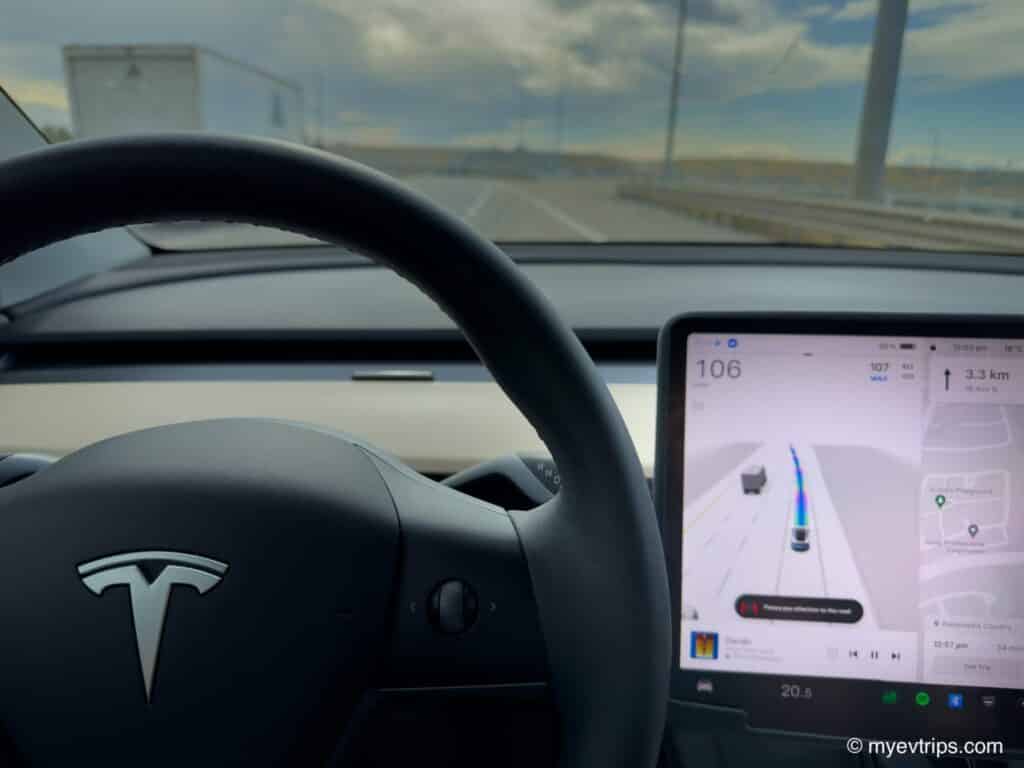
While Tesla’s Full Self-Driving package introduces significant advancements in driver-assistance technology, it’s crucial to understand its limitations and the need for driver oversight. Despite big promises, it’s not a replacement for an attentive human driver to date.
Tesla FSD vs. Enhanced Autopilot
Tesla’s Full Self-Driving (FSD) and Enhanced Autopilot represent different packages of autonomous driving features available in Tesla vehicles.
Enhanced Autopilot includes an array of advanced driver-assistance features such as adaptive cruise control, which maintains a set speed and distance from other vehicles, as well as Autosteer, enabling the car to stay within its lane, change lanes automatically on highways, and navigate on highways to your exit. Enhanced Autopilot includes features like automatic parking, summon, and traffic-aware cruise control.
In contrast, Tesla FSD includes all of the features of enhanced Autopilot with the addition of full-self driving from start to finish.
FSD promises more advanced features like Navigate on Autopilot, allowing automatic driving from highway on-ramp to off-ramp, recognizing and reacting to traffic lights, and stop signs, and navigating through city streets.
Tesla FSD Cost
As of posting this, Tesla FSD costs $12,000 USD ($15,000 CAD). Since every new Tesla vehicle is FSD-ready, owners can decide to purchase FSD and install it with an over-the-air software upgrade after purchase.
Note, like everything Tesla, FSD cost may fluctuate. For the latest rates, please consult Tesla’s official site or app.
Tesla FSD Costs Over the Years
When first introduced, Tesla FSD cost just $5,000. As the product improved and the promise of fully automated vehicles continued, prices rose to a peak of $15,000 USD ($19,500 CAD). This has since dropped to the current rate of $12K.
It should be noted that Tesla often runs promotions at quarter and year-end to boost sales. This has included trials and discounted FSD packages.
How to Buy Tesla FSD
Over time, Tesla has offered three ways to purchase FSD: at the time of purchase, after purchase with cash, and after purchase with points.
Adding Tesla FSD to a New Vehicle
When purchasing a new Tesla vehicle with the intention of adding Full Self-Driving (FSD), buyers have the option to include the FSD package at the time of ordering. Tesla’s website and ordering process usually allow customers to select FSD as an add-on during the configuration of the vehicle.
By choosing this option upfront, buyers can have the FSD software pre-installed, streamlining the process once they take delivery of the vehicle. This means that the vehicle will be equipped with the necessary hardware, and the FSD features can be activated via over-the-air updates once the purchase is complete. It’s important to note that pricing for FSD as an add-on to a new Tesla vehicle may vary and is subject to change over time.
Adding Tesla FSD after Purchase
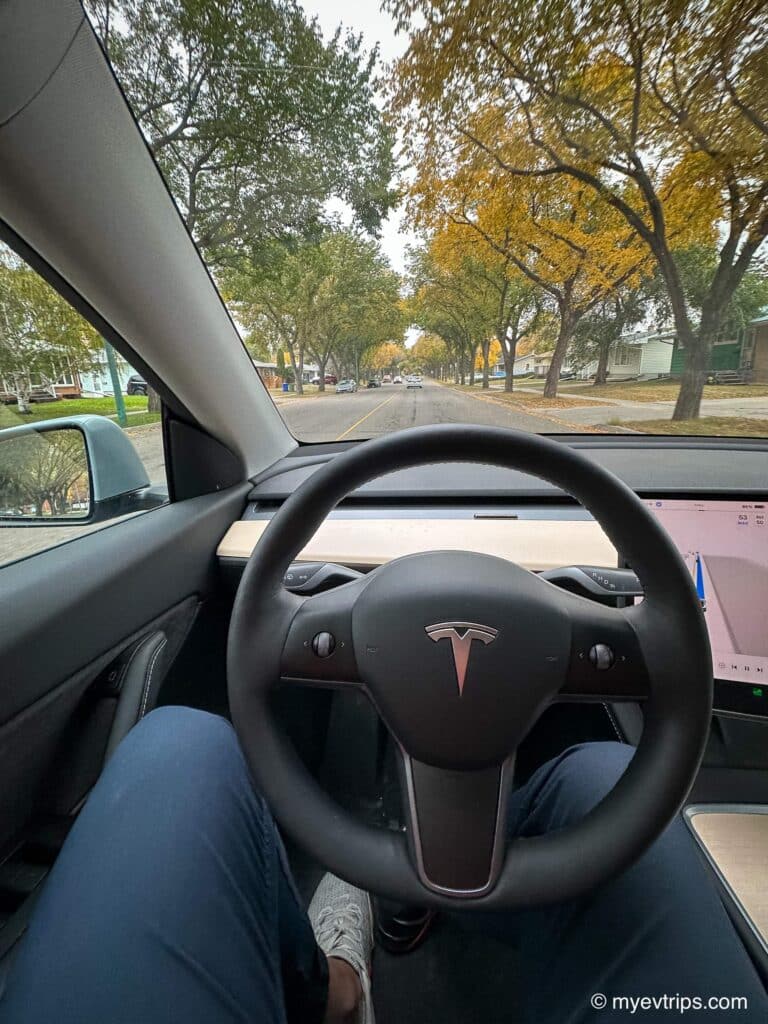
For those who already own a Tesla vehicle and wish to add Full Self-Driving after the initial purchase, the process involves purchasing the FSD software upgrade through Tesla’s official website or the Tesla mobile app. The option to add FSD is typically available through the Tesla account associated with the vehicle.
Once purchased, the FSD package can be activated through a software update sent directly to the vehicle, enabling the additional features and functionalities included in the FSD suite.
It’s important to verify compatibility and ensure that the vehicle has the necessary hardware to support the FSD features before purchasing the upgrade. Additionally, the price for adding FSD after the initial vehicle purchase may differ from the cost at the time of purchasing a new vehicle and could be subject to change based on Tesla’s pricing updates.
Tesla also, for a brief period, included Tesla FSD as an add-on through its referral store. Shortly after that was rolled out, the points structure changed, and the FSD was removed. It was replaced with a 3-month FSD trial for 10,000 points. This is how I personally added it to my Model Y and is what I used to determine if Tesla FSD is worth it.
Tesla FSD Subscriptions
Depending on where you live, Tesla FSD may also be available on a subscription basis. This is a great way to try it out or only pay for it when required, i.e., long road trips. I have since subscribed twice for seperate road trips and it was great. I would love to be able to do this on my European road trip.

Currently, Tesla FSD subscription is available for eligible cars in the United States for $199/month or $99/month for Enhanced Autopilot.
How to Install Tesla FSD
Installing Tesla FSD capabilities involves a straightforward process handled entirely through over-the-air software updates sent directly to the vehicle. Once a user purchases the FSD package either at the time of ordering a new vehicle or as an add-on after purchase, the necessary software is downloaded and installed automatically. This update process does not require physical installation or service center visits.
Upon completion of the software update, the FSD features become available for use.
As mentioned, I used referral credits for my Tesla FSD install to purchase a 3-month trial. From clicking redeem to testing it out, it took all of 30 minutes.
My Tesla FSD Review After a 3-Month Trial
My Tesla FSD review was very mixed and ranged from impressive to comically bad, with a couple of holy shit moments thrown in.
I can best summarize the experience with these five takeaways;
1) Tesla FSD is Not Safe
When I first turned on Tesla FSD it was a trip. The car does navigate relatively well on its own. That said, this was not without several scary moments.
The biggest issue I had was on rural roads in Manitoba. For some reason, FSD wanted to drive the car on the shoulder. I can only imagine that it thought it was a lane. I had to disengage several times and eventually stopped using it on those roads.
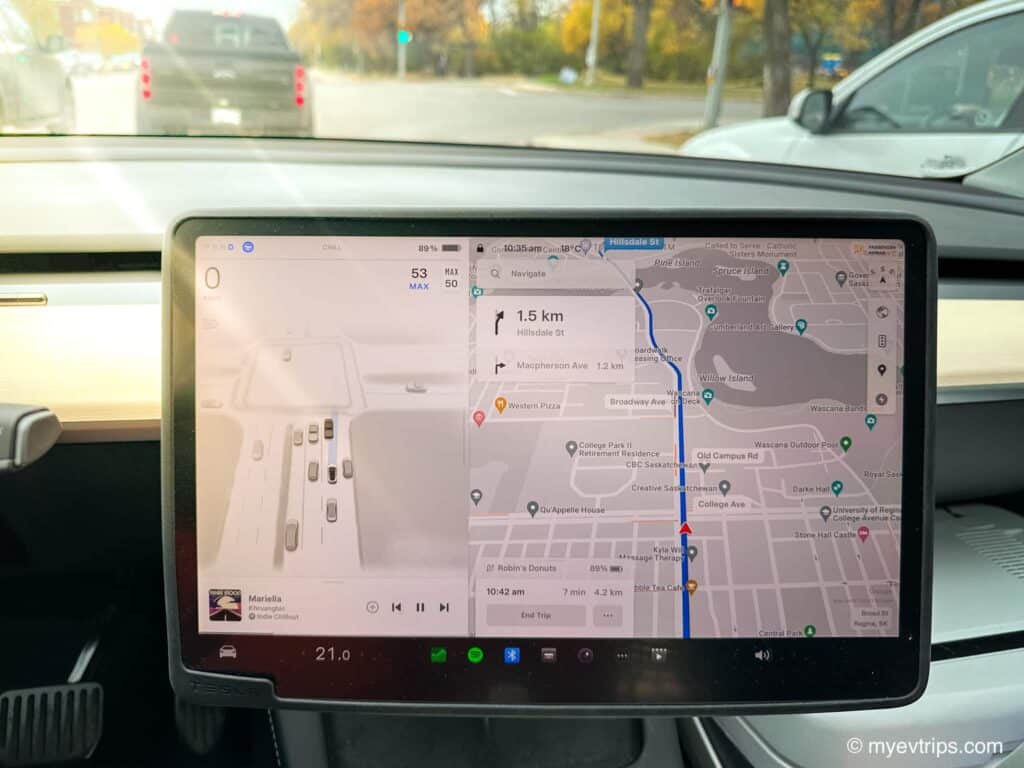
The other safety issue I had was that it was very indecisive about traffic situations on city streets. This is less of a safety issue and more of an annoyance. The software is, understandably, cautious, but this doesn’t translate well into real-world situations.
Now, if every car on the road were running FSD then this wouldn’t matter. Until then, it will just piss off and confuse people.
2) Tesla FSD Jail is Real
Speaking of annoyances and FSD being cautious overall, the AutoPilot “nag” is significantly worse when FSD is engaged. This makes sense to a point; however, I quickly racked up violations.
Tesla FSD uses the interior camera to ensure eyes are on the road and will nag you if not. The force required on the steering wheel also took more pressure to register, resulting in me getting several violations despite my hands being on the wheel. This made me understand why some people use Autopilot weights.
This got so bad that I eventually turned off FSD for long stretches so I could drive (or let the car drive) on Autopilot in peace.
That said, with the recent “recall,” it sounds like the same level of scrutiny Tesla FSD gets is also being applied to standard Autopilot.
Update: I eventually setup my S3XY Buttons for Autopilot acknowledgment, which made a huge difference!
3) Tesla Summon is a Gimmick
My first time using the Summon feature did not go great. I was in an empty parking lot and was trying to get the car to come to me a few rows away.
Even though there were no cars or objects in the way, the car moved painfully slowly. At its current stage, Summon’s only practical use would be to get the car out of a tight parking spot.
That said, there was a recent report of a Tesla owner getting his car out of a locked parkade thanks to Summon, so there’s that.
Speaking of parkades, the Selfpark feature is just OK. The car does a great job at parallel parking, which is great. However, it does have a hard time detecting parking spots, which makes it annoying to use. I have a tight parking spot at home that I was hoping to use the feature for; however, it has yet to be detected as a spot.
4) Auto Lane Change is Amazing
I should say that I tried Tesla Full Self-Driving, and it wasn’t all bad.
Shockingly, the best feature of Tesla FSD, for me at least, is the Auto Lane Change. I say shockingly, as it doesn’t seem like something I would care about, but after using it for three months of highway driving, I got very used to it. So much so that after my trial was up I still used the turn signal to try and automate a lane change.
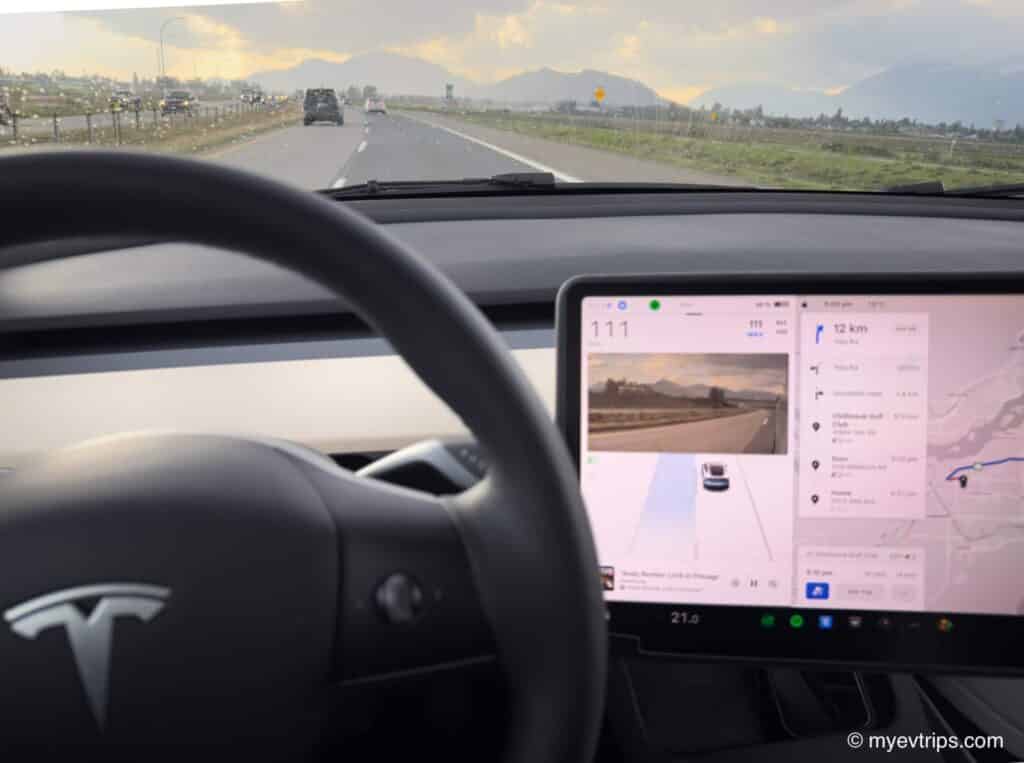
This feature makes highway driving that much easier and, safer. You simply engage the turn signal, and the vehicle changes lanes once it is safe to do so.
5) FSD Auto Lane Change is Not Amazing
To bring this FSD review back down a notch, although I really liked the Auto Lane Change that comes with Enhanced Autopilot, the FSD version is not great.
Aside from being annoying, changing lanes too frequently is also unsafe. There were numerous occasions when the car tried to change into an ending lane. I can only assume the cameras can’t see far enough ahead.
Now, you can adjust the aggressiveness of lane changing. However, I found it just isn’t there yet. It was another feature I ended up turning off on my three-month trial.
So, is Tesla FSD Worth it?
After I tried Tesla Full Self-Driving, I can say with certainty that, at its current price and usability, Tesla FSD is not worth it.
With no realistic window for how far autonomous driving is away, I would not recommend adding it to your new vehicle purchase. I would recommend trying it out through a subscription or referral to get an idea if it is for you.
If you are comparing Tesla FSD vs. Enhanced Autopilot I would recommend the latter. The Auto Lane Change feature is fantastic, plus it includes all the other extras FSD has (Summon and SelfPark). That said, I will pounce if this option comes up as a referral reward again or pay ~$2,000 for it.
What say you? Is Tesla FSD worth it for you? Let me know in the comments below!
SAVE ON A NEW TESLA!
Thinking of buying a Tesla? Use this referral link to get up to $1,300 off!*
*As of August 2024, Tesla has reinstated its referral program and introduced attractive financing options!
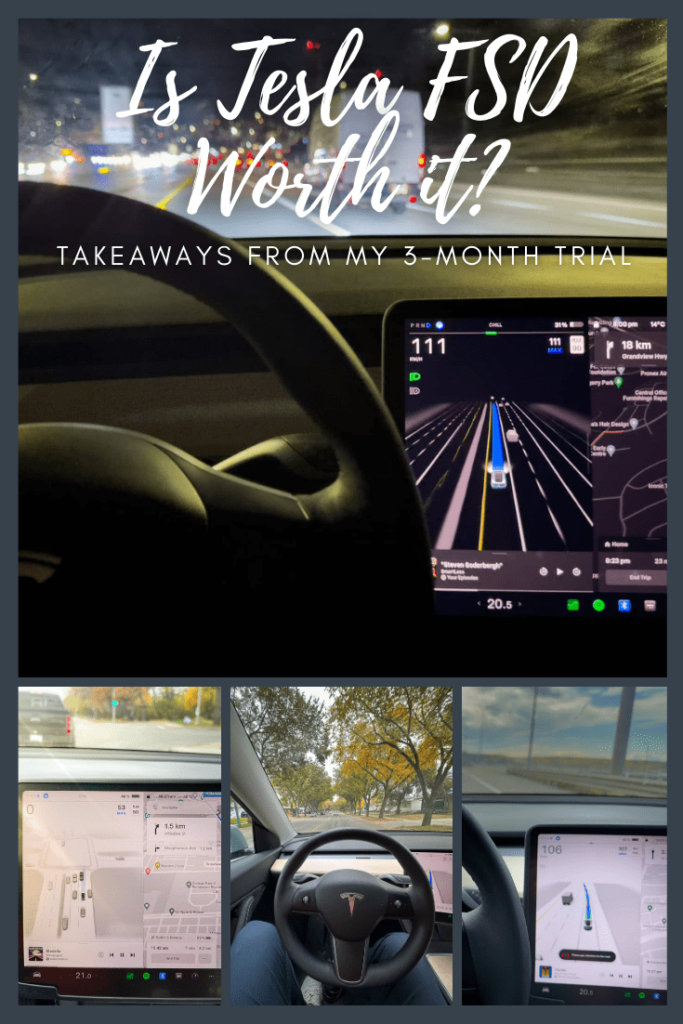
READ MORE:


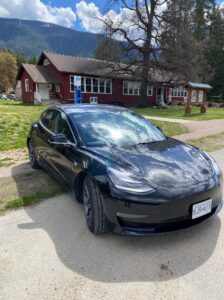
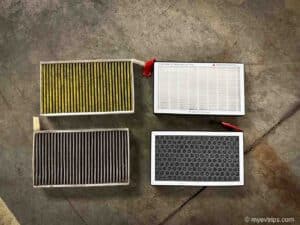
I test drove aTesla Y. Hated it the regenerative one pedal driving. I said no to the car. He bought one anyway. This morning after a harrowing drive home from breakfast, I announced to my husband that i will no longer be a passenger in our Tesla on FSD. We live in the country and it takes corners at 80 kms, oversteers to avoid roadside vehicles to the point it feels like we’re heading into the opposite ditch. Lastly, I cannot be comfortable when the driver doesn’t have both hands on the steering wheel.. The parking is very cool and again you need painted lines for it to work properly. It’s July 2025.